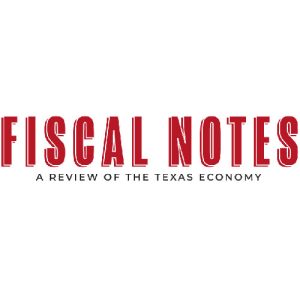In May 2024, Texas set a daily power consumption record for the month, six times. The Electric Reliability Council of Texas (ERCOT) anticipates that this trend will continue, with predictions of above-normal temperatures and potentially below-normal rainfall straining the state’s power grid as residents and businesses crank up their air conditioning. With a rapidly growing population and economy, it is vital that Texas remains powered.
To keep the state’s electric grid running smoothly, ERCOT forecasts demand to ensure there are no disruptions or shortages in electric supply. However, forecasting energy demand is as complicated as it is essential. Grid operators use variables from numerous sources, and even so, revisions are necessary.
From artificial intelligence to electric vehicles, business growth and power-hungry tech applications are driving up energy demand, making accurate forecasting crucial. This article delves into the intricacies of demand projections, including recent changes in ERCOT’s planning methods and the various factors that Texas’ electric grid operators must account for in real time.
Forecasting Factors
ERCOT functions independently from other U.S. grids and is therefore not subject to the same federal regulations. ERCOT’s grid operators are vigilant in their work to balance supply and demand because when the power goes off to consumers, crises can occur, including, tragically, the loss of Texans’ lives.
Load forecasting — the science of predicting electricity demand — is essential for ensuring enough resources are allocated to meet energy needs. Accurate load forecasting is the linchpin to maintaining grid reliability, optimizing power system operations and planning future infrastructure investments.
The process is typically divided into three categories:
- Short-term Forecasting: Spanning from five minutes to a week, this forecast is pivotal for real-time control and scheduling of power systems.
- Medium-term Forecasting: Covering a period from one week to a year, it aids in maintenance planning, fuel purchasing and other operational activities.
- Long-term Forecasting: Extending beyond a year, this forecast informs capacity planning, infrastructure development and policymaking.
ERCOT employs a sophisticated load forecasting model that melds various technical specifics and data sources to safeguard the grid’s reliability. The forecasting process hinges on several factors, including:
- Weather Data: Weather conditions significantly impact electricity demand. ERCOT employs detailed weather forecasts to predict load fluctuations.
- Economic Indicators: Economic activity directly influences electricity consumption. Indicators like employment rates, industrial activity and population growth are integral to load forecasts.
- Real-Time Data: To maintain grid stability, ERCOT uses real-time data from smart meters, sensors and other monitoring equipment to adjust forecasts as needed.
Revising forecasts is crucial to adapting to changing conditions and improving accuracy. Load forecasts can shift abruptly. Take, for instance, the revelation this June by ERCOT’s CEO, who delivered a jaw-dropping new estimate saying Texas power needs would far surpass earlier projections due to factors including growth, weather and a new state law changing forecast parameters. These sudden changes demand swift recalibrations in energy planning and resource management by ERCOT, often under intense scrutiny.
Challenges Ahead
Peak consumer demand for electricity on the Texas grid ballooned in the summer of 2023, setting a record at 85.508 gigawatts (GW) on August 10. This record is more than 14% higher than the peak demand in August 2019.
But by 2030, peak demand could nearly double to 150 GW, ERCOT CEO Pablo Vegas told the Senate Committee on Business and Commerce on June 12. “It’s a fairly significant step change from a demand perspective,” said Vegas. “All of that [demand] may not come, but even if a significant portion of it does, it’s a really significant growth number.”
Spikes in demand on the grid, especially since 2020, result from a myriad of interrelated factors in Texas, including population growth, extreme weather patterns, the proliferation of electric vehicles and the expanding footprint of data centers, artificial intelligence and cryptocurrency mining. ERCOT’s forecast also was affected by a new law prescribing how to estimate growth.
Population Growth
Texas’ population is booming — and it has been for more than a decade. In 2022, Texas joined California as the only other state with a population of 30 million or more. Between 2012 and 2022, the state’s population grew by 3.9 million, or 15%, the largest growth among all states and more than double the U.S. growth of 6.2%. In Texas’ largest metro areas, population growth was even higher. This growth places additional demands on the state’s power grid.
Extreme Weather
Well before the official start of summer this year, the Texas grid set several new daily power consumption records, as households and businesses cranked up their air conditioners to cope with an unseasonably early heat wave. One of those days was May 27, during which power demand peaked at 77.122 GW and shattered the previous May record of 71.645 GW in 2022.
According to ERCOT, six of the state’s 10 hottest summers on record since 1895 have occurred since 2010.
It’s not only the heat that drives up power demand, but also the severe cold spells that have hit Texas in recent years. In February 2021, Winter Storm Uri caused power demand to surge as Texans struggled with near zero temperatures and forced ERCOT to initiate rolling blackouts across the state to avoid a catastrophic total blackout. Nearly 70% of Texans lost power at some point during the storm.
Electric Vehicles
Electric vehicles (EVs) have proliferated in recent years, and just about every car company now sells at least one EV model. As of August 2024, there were more than 300,000 EVs registered in Texas, up from fewer than 10,000 in 2014. Most EV drivers currently reside in the state’s biggest metro areas.
As EV use increases, Texas’ power grid will take on additional demand. While EV sales have slowed globally, ERCOT projects that in 2029 EVs will make up 4% of all vehicles on the road and consume 6.7 terawatt-hours (TW).
Data Centers and Artificial Intelligence
The modern economy, in which business and commerce are conducted online in some form or another, requires a vast network of data centers, the facilities that house servers and other equipment that make the internet and all that comes with it — online shopping, banking and health care — a reality. Data centers are typically energy-intensive, using continuously running cooling units and fans to prevent servers from overheating.
Because of its relatively cheap energy market, Texas is experiencing rapid growth in data centers, especially between Dallas-Fort Worth (DFW) and San Antonio. At the time of this writing, there were 279 data centers in Texas, with 141 in DFW. In 2023, DFW was home to about 0.565 GW of data center inventory, the second-most in the U.S.
Data centers supporting artificial intelligence (AI) and artificial general intelligence (AGI) applications, however, will consume even more energy.
“AI and AGI data centers are one of the fastest-growing components of the data center industry that’s coming,” said Vegas. “If you look up ‘what is ERCOT’ with a regular Google system versus an AI Google search, the amount of energy that it takes to run the AI search is between 10 and 30 times the power requirement.
“That’s just a simple search. AI is being used to teach large language models, the concept of generative AI, where you can ask it to write a story about your life and give it a few prompts — those types of things use much more energy.”
Cryptocurrency
Likewise, cryptocurrency mining — or the practice of solving complex mathematical problems with hundreds or thousands of servers in specialized data centers to create digital currency such as bitcoin — has gained traction in Texas due to the state’s infrastructure, lower water and electricity prices, and favorable economic policies and incentives.
By one estimate, a 1-megawatt (MW) cryptocurrency mine uses more energy than 700 households — the largest crypto mine in Rockdale, Texas, is 450 MW.
As of the fourth quarter of 2023, the total power capacity of cryptocurrency mines operating in Texas was 2,717 MW, more than anywhere in North America by a large margin. Georgia is a distant second at 525 MW.
But the power capacity of cryptocurrency mines doesn’t tell the whole story. “The main difference between our facilities and other data center facilities is that we are flexible loads, and they are firm loads,” says Brian Morgenstern, head of public policy for Riot Platforms, the largest bitcoin mining company in Texas. “And at peak demand, we can work with whatever the grid needs. So, when people are turning on their AC, we’re turning off our mining rigs.”
Morgenstern emphasizes that “grid reliability is extremely important to us. We don’t have a business without grid reliability.”
Crypto miners like Riot are leveraging a long-standing practice in Texas’ energy market, typically used by large industrial electricity consumers, by adjusting their operations to sell unused power at premium prices during peak demand. This strategy is baked into ERCOT’s energy-only wholesale electricity market, potentially increasing revenue and contributing to grid stability. While the integration of cryptocurrency mining into Texas’ power management strategy has been effective, it has also sparked debate.
Challenges and Changes in the Texas Energy Sector
The Texas energy sector is undergoing a seismic shift, grappling with burgeoning demand and the intricacies of a rapidly evolving energy landscape. With the passage of House Bill 5066 by the 88th Texas Legislature, ERCOT gained the ability to add prospective load growth by including potential users without a signed agreement in their resource planning — a change that contributed to the June increase in its demand forecast. During an April 2024 ERCOT board of directors meeting, Vegas highlighted the collective efforts of all Texans, stating, “Because of the work of state leaders over the last couple of years, ERCOT now has the tools and the resources to be able to plan and meet these challenges ahead.” This legislation marks a significant step forward in addressing the state’s evolving energy demands.
Load forecasting lies at the heart of ERCOT’s planning strategy. Utilizing a blend of historical usage data, weather patterns and economic indicators, ERCOT’s models provide a detailed roadmap of future energy needs. Accurate forecasts enable ERCOT to minimize and prepare for fluctuations in electricity consumption, a lesson underscored when Winter Storm Uri exposed vulnerabilities in the grid.
The complex interplay of growing demand and renewable energy integration highlights the importance of proactive measures and continuous improvement in grid management practices. Through a combination of legislative action, strategic planning and technological innovation, Texas is poised to build a more reliable, efficient and sustainable energy system — ready to meet the needs of its dynamic population and thriving economy.
This article has been edited for length and clarity and was originally published in Fiscal Notes, a publication by the Texas Comptroller of Public Accounts.








